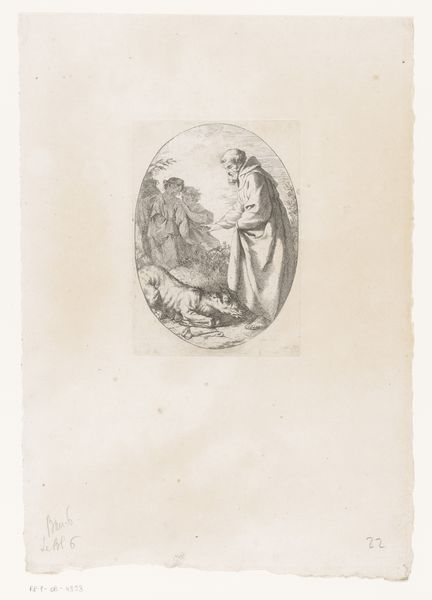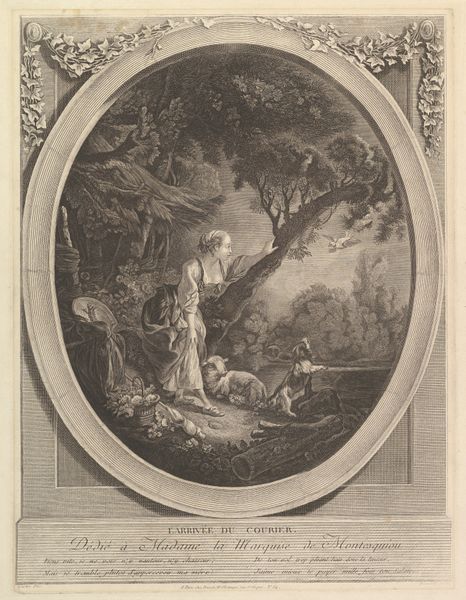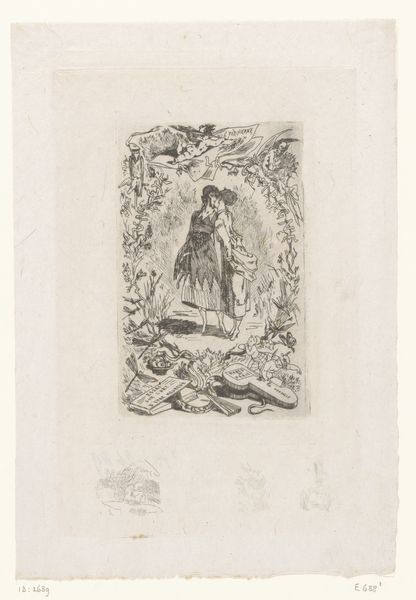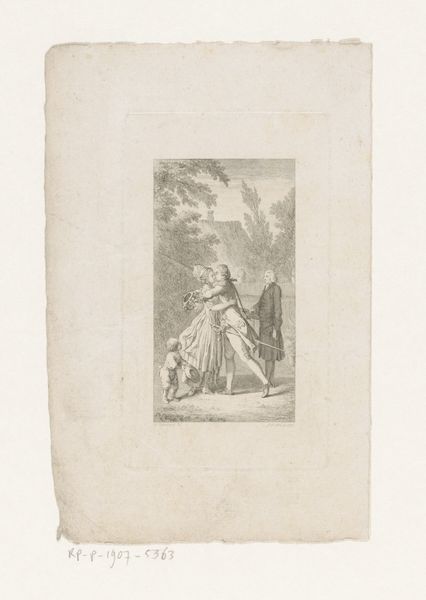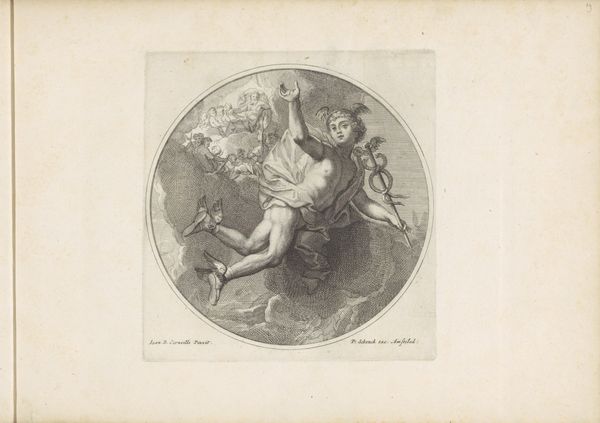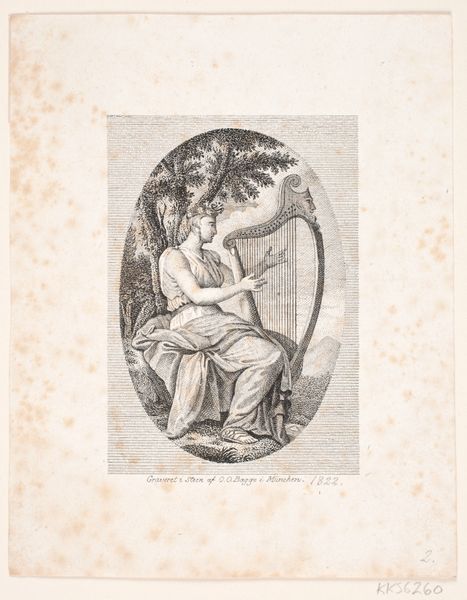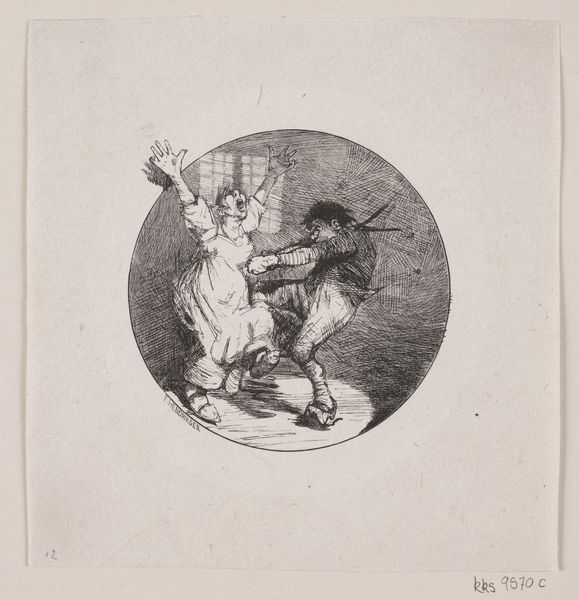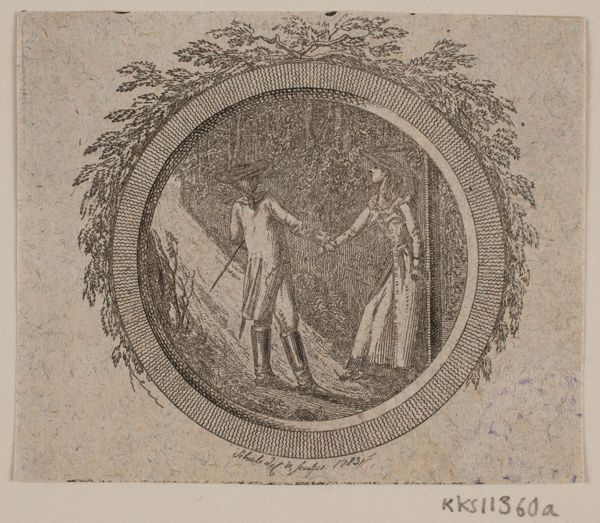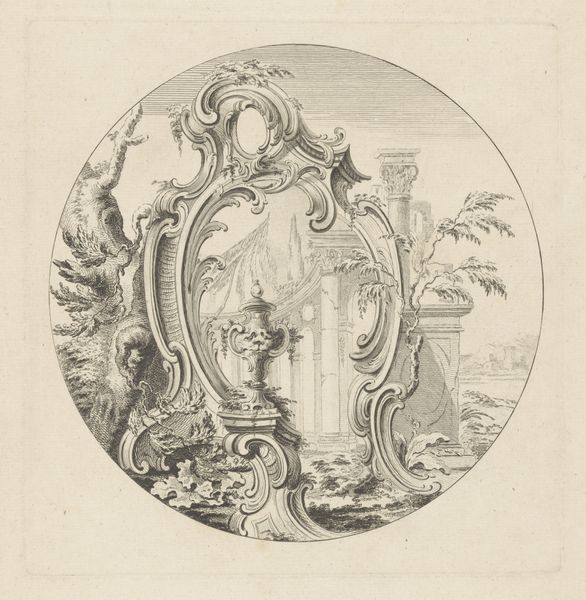
print, engraving
# print
#
landscape
#
figuration
#
romanticism
#
history-painting
#
engraving
Dimensions: 123 mm (height) x 103 mm (width) (bladmaal)
Editor: This is Gerhard Ludvig Lahde's "Titelvignet til Danmarks og Holsteens Flora" from 1796. It’s an engraving, and something about its classical figures and the idyllic landscape gives it a sort of dreamy, romantic feel. What do you make of it? Curator: Oh, it whispers secrets of another time, doesn't it? To me, this isn’t just an illustration; it's a window into the late 18th century, a period deeply infatuated with both scientific exploration and idealized nature. The title vignette—sort of a visual appetizer, you could say—sets the stage for a book cataloguing the flora of Denmark and Holstein. What catches *your* eye first? Editor: The figures, definitely! They look like they're from a myth. Curator: Exactly! They embody that era's love for allegorical figures, draped in classicizing garb amidst nature. Look at the figure placing the floral crown - perhaps meant to be Flora herself? The sickle held by the seated figure relates to agriculture and harvest. Do you see how it intertwines a sense of enlightened reason (the scientific aspect) with Romanticism’s emotional connection to nature? Editor: I see it now, almost like science and mythology shaking hands. Curator: A delightful image, isn't it? It also demonstrates the function of art during this period, which aimed to enlighten the public while instilling a sense of national and aesthetic value in local regions and landmarks. What do you take away from that synthesis of nature and idealism? Editor: It feels like it makes botany more poetic. Curator: Precisely! It elevates the study of nature to something beautiful, almost divine. I hadn’t considered the work through the lens of “making botany more poetic” until you mentioned it! Editor: This engraving makes me think differently about what a scientific illustration can be.
Comments
No comments
Be the first to comment and join the conversation on the ultimate creative platform.

